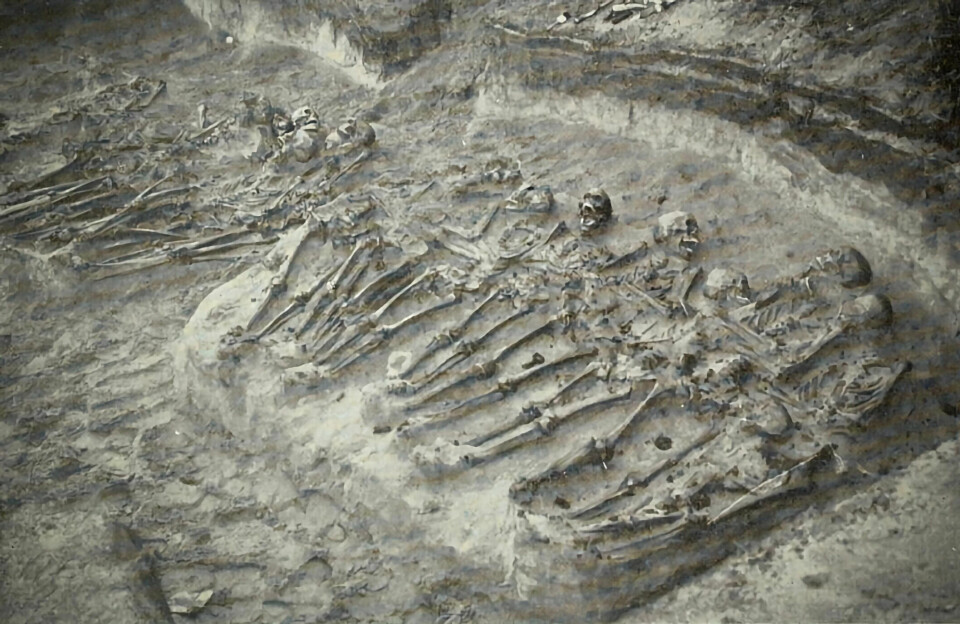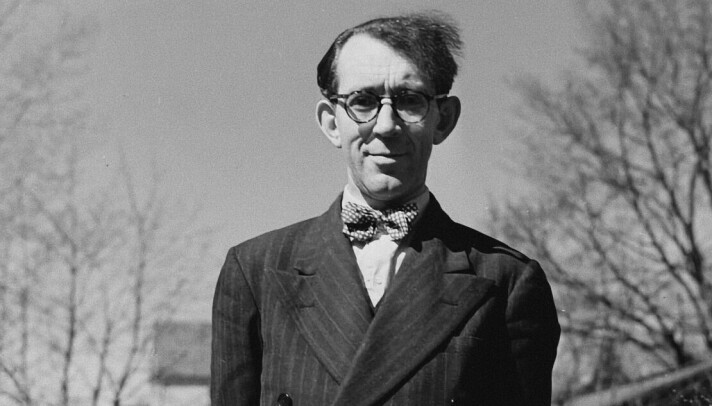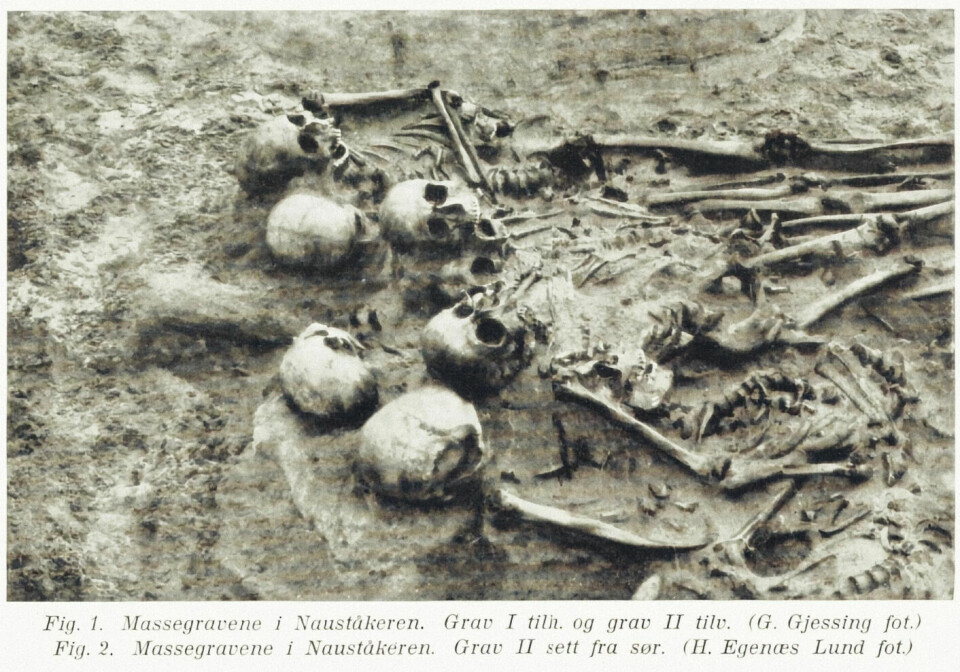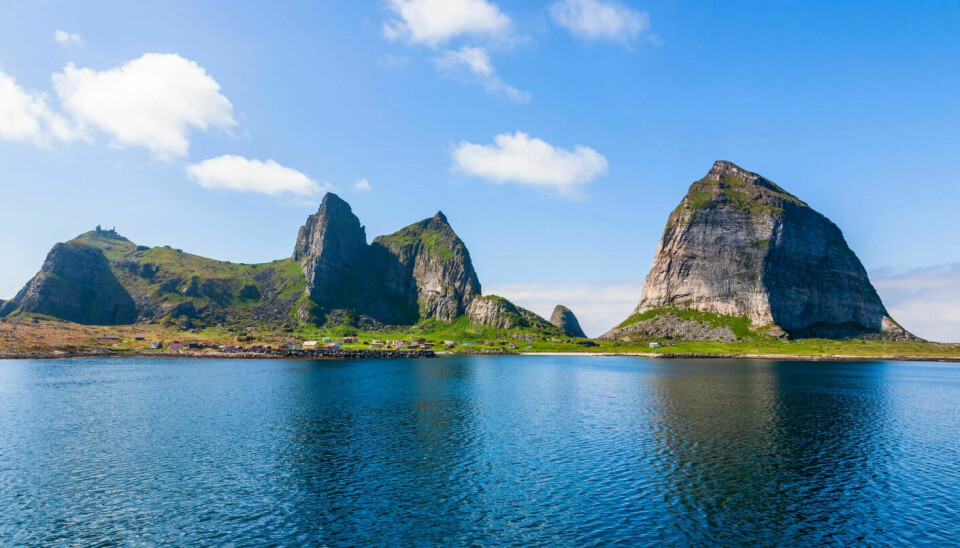
These mass graves in Northern Norway will now be re-examined
What killed these people? When did they die? Who are they?
Something dramatic must have happened.
But none of the dead show signs of weapon injuries.
Was this a local disaster? Was the entire local community on the Træna islands, far out at sea off the coast in Nordland, wiped out?
In one of the graves lay a sword made in France sometime between 1250 and 1350.
Discovered in 1937
Katharina Lorvik is an archaeologist at the Norwegian Institute for Cultural Heritage Research (NIKU). Her specialty is osteoarchaeology, the analysis of skeletons.
Lorvik will now start a research project where she will try to find out more about the special graves and human remains on Træna.
The graves were discovered accidentally by archaeologist and ethnologist Gutorm Gjessing in 1937.

Gjessing ensured that three mass graves and several smaller communal and individual graves on Træna were excavated between 1937 and 1939.
He found a total of 33 dead inside the well-known Kirkhelleren on the island of Sanna, where the Trænafestival is held each year.
He found two other mass graves near the water's edge on the same island. They contained a total of 24 dead.
Today, 50 of these remains are stored at the University of Tromsø. A couple of the others were lost at sea during transport to Tromsø.
Most viewed
Genetic mapping
“In our research project, we will go through all archaeological documentation that can give us information about when and how these graves were created,” Lorvik said at a recent NIKU seminar.
“We will also conduct new analyses of sex and age. And we will look for traces of diseases and injuries on the skeletons.”
Researchers will also perform a genetic mapping of all the dead. This could reveal a lot.
Was it the plague?
According to Lorvik, it is likely that the mass graves are from the Middle Ages.
“We believe they’re from around the time of the Black Death,” she says.
An important part of the research project will therefore be to investigate whether it is possible to detect plague as the cause of death.
“We also hope to be able to say more about how these people lived and where they came from,” she says.
The German Max Planck Institute is collaborating with NIKU to fund this research.

An axe and a bear tooth
All the 33 dead inside the large sea cave Kirkhelleren, lay with their heads facing the opening of the cave.
There are no other certain signs that the cave has been used as a common burial site throughout history. Nor are there any obvious practical reasons for the dead to have been placed here. So why are they here?
“The dead were probably buried within a very short period of time,” Lorvik said during the seminar.
It is highly probable that the inhabitants of Træna were interred collectively, given that there's no evidence suggesting individual burials.
In one of the graves, the dead lay systematically next to each other. In another grave, they appear to have been randomly stacked on top of each other.
The axe discovered by Gutorm Gjessing, found alongside one of the deceased, currently provides the strongest indication that the dead are from the Middle Ages.
Some stone beads, a bear tooth pendant, a knife, a belt buckle, and several other objects were also found.

Tooth damage in children
“Wear and tear damage is evident in the back and major joints of some of the deceased,” Lorvik said.
“However, we find no signs of trauma or weapon injuries that could have caused the deaths. Only a few elderly individuals have skeletal fractures.”
“There are also signs of significant tooth wear in some individuals and possible acid damage to the teeth of children. In connection with other material from northern Norway, the latter has been interpreted as the result of a combination of soured milk and mechanical wear.”
The height of the dead men varies remarkably, ranging from 150 centimetres to up to 175 centimetres.
Two men and a small child
Most of the dead from Træna that are stored at the University of Tromsø are well preserved. This is a good starting point for analyses of the remains.
Perhaps the most special discovery was made in one of the grave groups inside Kirkhelleren.
Here lay two adult men along with a child under one year old.
On the right side of one of the men lay a long sword, likely made in France sometime between 1250 and 1350.
Could this tell us something about the contact people on Træna had with the outside world in the Middle Ages?
A cross-section of the population
All in all, the people in the mass graves on Træna are what we must assume was a cross-section of the population on the islands several hundred years ago.
However, there's a noticeable majority of individuals who died between the ages of 20 to 35 years.
This could be related to the fact that many men in this age group from other parts of Nordland lived on Træna to participate in the rich fishing around the islands. Also, Sámi people involved in trade or fishing may have been present on the islands.
Was the local community wiped out?
During the seminar, Lorvik stated that both sites clearly indicate that the graves were established following very dramatic events.
“Since there are no signs of the use of violence, weapon injuries, or anything similar in any of the individuals, it’s reasonable to think that this was due to an epidemic and that actually concerns the Black Death,” she said.
“Such a mass death could have wiped out an entire local community.”
All of this is what the researchers now hope to get better answers to.
Unique source of knowledge about people in Northern Norway
Katharina Lorvik also points out that the 50 remains from Træna that reached Tromsø are well preserved. They may prove to be a unique source of knowledge about the people who lived in Northern Norway a long time ago.
“The material has great source value, by virtue of being so complete and having such a large volume,” she said.
“The expectation for this research project is that it can provide us with a lot of new knowledge about people's health, demographics, and social relations.
“We also hope to gain more knowledge about how the epidemic could affect this small community. About how people have sustained themselves and about people's movement patterns and networks.”
The study of DNA can also provide knowledge about biological kinship among people.
———
Translated by Alette Bjordal Gjellesvik.
Read the Norwegian version of this article on forskning.no





































